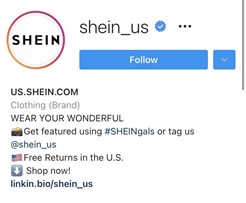We live in the social media era. An era where a large demographic of diverse individuals are scattered across various platforms and where hashtags and trends shape public opinion.
Today, the saying “the world is a global village” has never been more correct. Thanks to social media platforms, individuals worldwide connect as though they were right beside each other.
Apart from connecting people, social media is also an effective business tool, helping brands build awareness, ratify buyer decisions using social proof, and leverage the advantage of influencers to boost sales.
GlobalWebIndex reports that 54% of social browsers use social media to research products. Furthermore, a report by Deloitte revealed that consumers influenced by social media are four times more likely to spend more on purchases; that 29% of consumers would more likely make purchases on the same day using social media. Indeed social media is a great way to build visibility and engage consumers in new markets, But how do you do that? And what does it entail? In this post, we would be looking at and lot more.
Going Global While Thinking Local
Going global through social media goes beyond translating your website and products to a target language. Brands looking to leverage social media internationally must recall that while their messages must stay consistent regardless of the region, they will need to localize their content. And this will involve tailoring the cultural reference points, platforms, and tactics to meet the specific market in question.
Catering to users via social media can no longer be an afterthought as more than half of the world’s population now have a presence on the various existing platforms. That said, brands need to be strategic about their social media strategy. Although adopting a multichannel approach is a welcome idea, it is best to meet social media users of a particular region where they exhibit the most activity.
Brands must also understand that social media platform usage differs with country and region. For example, Facebook, which is very common in the west, is banned in China, where WeChat reigns supreme. Also, XING, not LinkedIn, is Germany’s most popular site for business.
When venturing into global social media marketing, brands must first do their research. Questions like what platform to use and how to put out content must be factored into the global social media strategy.
Resist the temptation to simply translate all your social content as generated in the HQ. Instead, create brand-critical content on a global level and then localize it to suit the target market. This should include any pre-planned ad campaigns, product announcements, and press releases. You should hire locals or professional language service providers who have an in-depth understanding of the cultural preferences of the market you plan on entering. This way, your content will come across as more authentic and personalized.
SHEIN: A Case Study of a Brand Using Social Media to Drive Growth
Although founded in 2008, this Chinese online clothing and accessories behemoth only recently became a household name in the fast fashion industry by leveraging social media platforms like YouTube, Instagram, and TikTok.
On TikTok, SHEIN drives sales by a constant stream of coupons and discount codes to its followers. They have also managed to create an army of fashion bloggers supporting their brand and making posts with hashtag Shein. This #Shein has amassed over 6 billion views and appears in over 70 other hashtags presently trending. Additionally, they also maximize the power of influencers, rewarding them with free merchandise and affiliate commissions.
SHEIN takes its global strategy a step further by creating separate social media accounts for individual markets, thereby giving a local feel to an otherwise international brand.



Big Social Media Techs Adopting A Local And Global Approach
If our word and SHEIN’s success are not convincing enough to sway you on the need for a localized social media strategy, then take inspiration from what Big-Tech is doing.
For starters, Facebook follows a locale-based architecture organized by a combination of language and country/region. Utilizing nomenclatures like es-ES, es-MX, jp-JP in their URLs to represent the language and region. With es-ES denoting Spanish-Spain while es-MX represents Spanish-Mexico. Brands can maximize this by publishing not just translated but localized content.
Twitter also employs a locale-based approach to its content and users. Brands can decide on having localized accounts while still maintaining a global profile. And on some of these platforms, you often find that the localized social profile, although with fewer followers, may experience higher engagement than the global account.
With YouTube, brands have the option of hosting a global channel for multiple languages and locales, hosting multiple channels for specific languages and regions, or combining both strategies — having a global channel and other region-based channels.
TikTok offers over 40 different languages and has invested in influencers in each market. These factors have contributed to their growth, and many well-known brands like BMW have started testing the waters, having localized pages to fit their target market.
Conclusion
As the number of social media users worldwide balloons, so will the influence these platforms have on our everyday lives. Brands can no longer stay docile and must develop creative ways to meet their target audience on the social media platforms relevant to their locale. At the same time, for these stakeholders to fully utilize the potentials of social media, they must employ best practices in localization and translation to develop content that connects with users and addresses all their pain points.
Employing the services of a professional language service provider like Translationsinlondon is the first step to ensuring a successful global journey.


